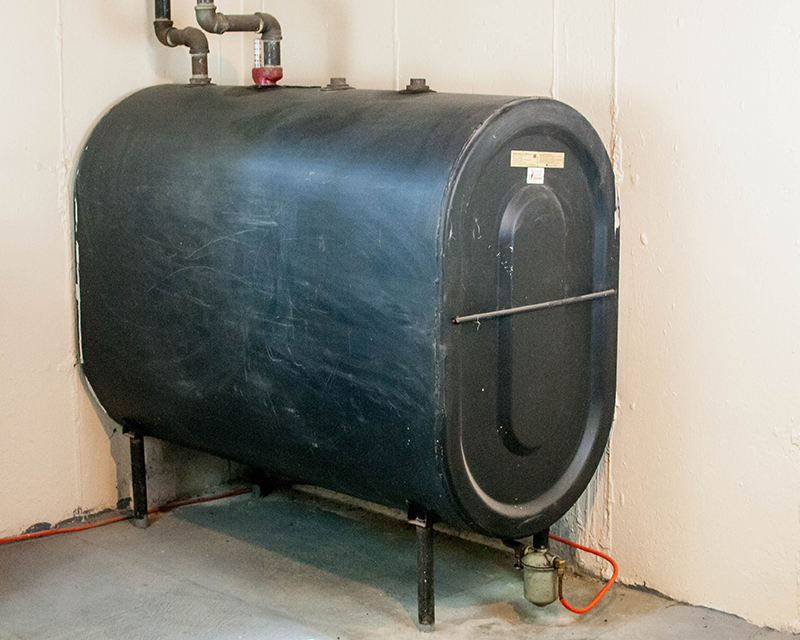Most homeowners find the hum of their furnace soothing in cold winter nights. Most of the time, the oil tank, the largely unnoticed key to that warmth is overlooked until a problem arises. Tank replacement is a crucial component of proactive maintenance to ensure the safety and security of your house. This article will explore the world of oil tank replacement costs, helping you navigate this important investment in the overall wellbeing of your home.

The importance of maintenance on oil tanks Avoidance is the key to success
Many homeowners don’t realize the importance of the oil tank’s service. But, a functioning oil tank is crucial to the infrastructure of your home. It is important that you as the responsible owner of a home, ensure your heating system as well as the storage tank for the oil are functioning effectively and safely. Small oil spills can become a huge environmental and financial burden in the future.
Understanding Average Costs: A 275 Gallon Case Study
It is crucial to have the correct information when planning for home maintenance projects. Check out how much it costs to replace an oil tank that is 275 gallons, which is the largest size. In Massachusetts, New Hampshire, Rhode Island and Connecticut the cost for replacing the 275-gallon tank for oil is $3,600. It is important to remember that this cost is based on a simple replacement in an outside basement or space without major problems with access.
Beyond the Price Tag Why Oil Tank Replacement is a wise investment
It is important to think about replacement of the oil tank in an investment that can benefit your home’s security and comfort. Here’s why:
Safety First: As the oil ages, tanks can leak which can lead to fire hazards and a risk of environmental contamination. This is prevented by replacing the tank, which gives your family and you peace of at.
Maximized Efficiency: Older oil tanks may become less efficient over time and will require more frequent oil deliveries to keep warm. Modern tanks function at their highest efficiency, and could lower heating costs in long term.
Peace of Mind for Many Years to Come: A brand new oil tank will provide many years of reliable service, eliminating the anxiety of sudden breakdowns or leaks in winter’s harsh months.
Factors Affecting Oil Tank Replacement Costs
As a base, the average price of $3600 for a replacement fuel tank that is 275-gallon is a good point to start. The final price can be influenced by a variety of factors:
Size of the Tank: The larger tanks typically cost more to replace than smaller ones.
Location of the tank: It’s more costly to take out and replace a tank that is under ground than a tank situated within an easily accessible crawlspace or basement.
If you own a tank that is hard to access due to surrounding structures or tight space and tight space, the labor costs will be higher.
Proper disposal of tanks that are not properly cleaned can result in higher costs.
Budgeting for Oil Tanks Replacement Plan for the Future of Your Home
Tanks for oil have a life expectation of between 15 and 30 years, based on a variety of factors. Knowing the approximate age, you can prepare for a replacement tank in case issues arise. You might consider scheduling an inspection with a professional so that you can receive a precise estimate on replacing your tank. See more at Oil tank replacement cost near me
Insuring Your Home’s Safety and Sustainability
Replacing your oil tank isn’t only about preserving warmth and convenience; it’s also a commitment to environmental responsibility. Tanks that are older can cause leaks and contamination of soil and groundwater. Modern tanks are built to meet the strictest environmental standards, which minimizes the risk of damage to the environment as well as ensuring responsible storage.
Knowledge is Power: Take Control of Your Home’s Well-Being
Make educated choices regarding the home maintenance you perform by understanding the cost of replacing your oil tank. You can ensure that your home’s heating system will be ecologically-friendly and reliable for a long time by focusing on the proactive replacement. Be prepared to be caught off guard when you encounter an oil tank problem during the winter months. Make a plan and budget for this home maintenance task to ensure you’re warm and cozy during the coldest seasons.
